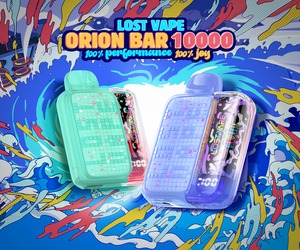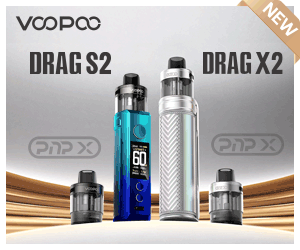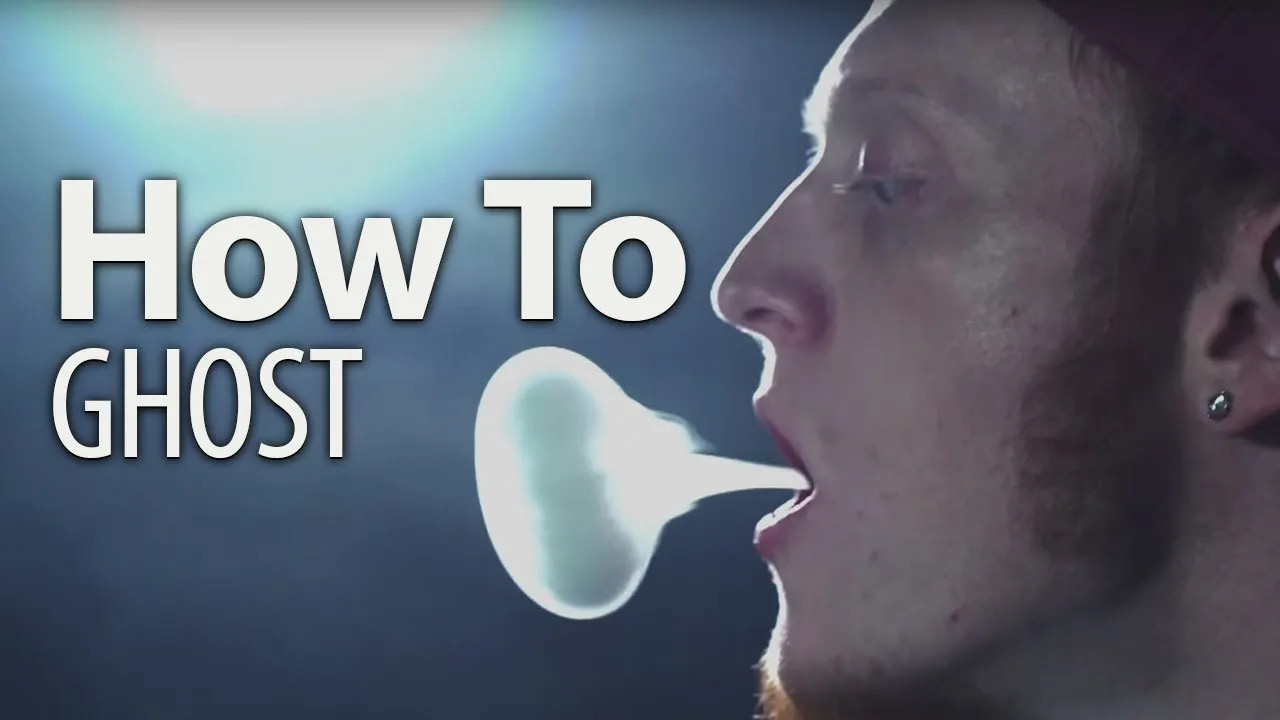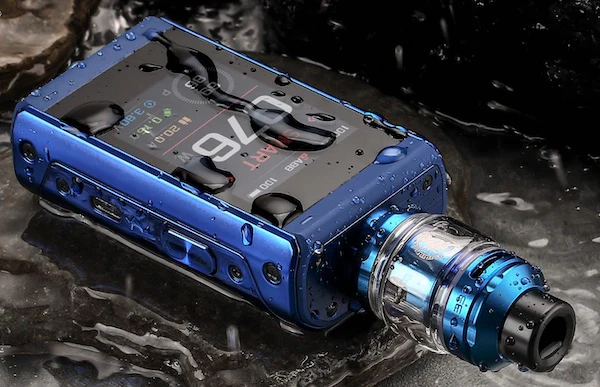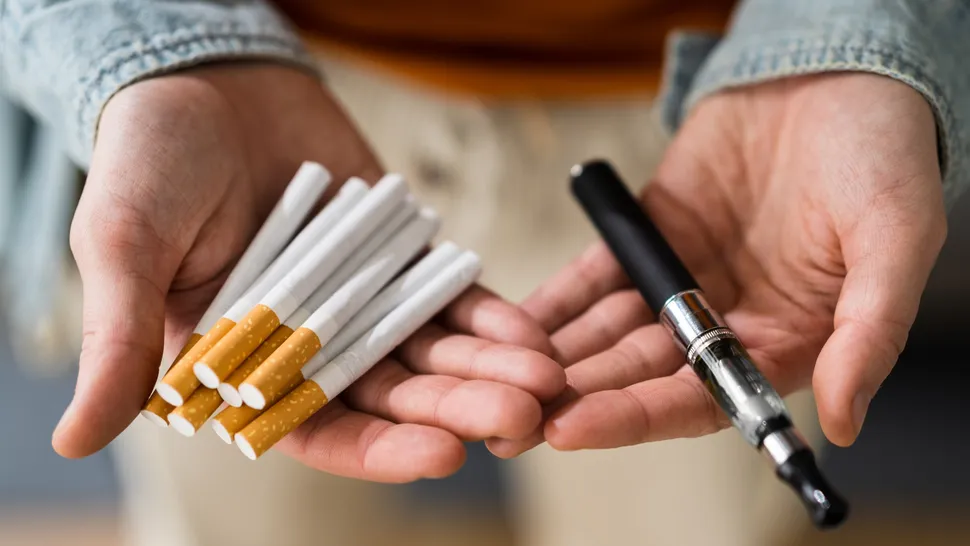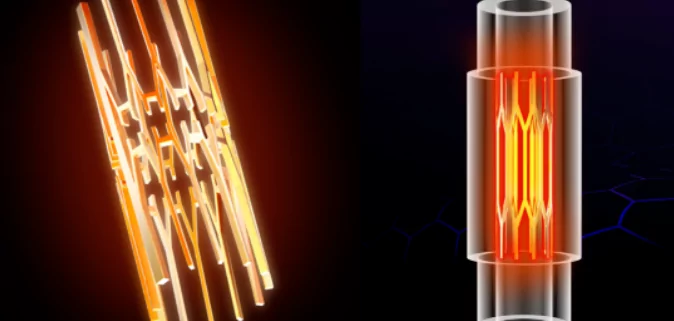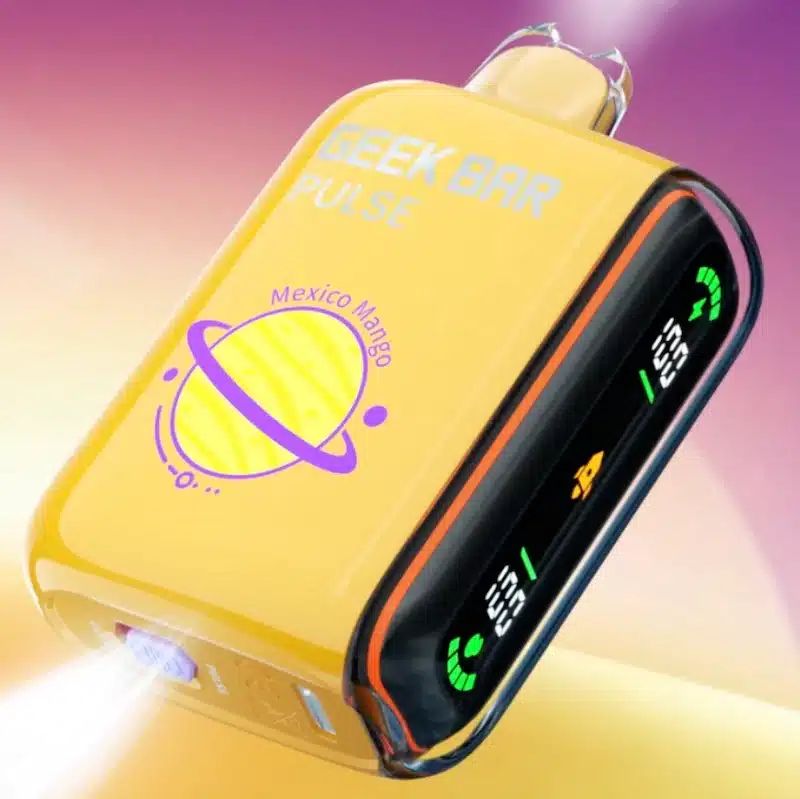What is vaping e-liquid? What is the components?

Liquid for use inside an e-cigarette is called e-liquid, it is the name given to the fluid that your device turns into vapour. E-liquid is also known as e-juice or vape juice. E-liquids may contain nicotine, as well as propylene glycol, vegetable glycerin or glycerol, other chemicals (including those used to create flavours) and, in some cases, water. It might seem like a complicated product, but really it can be broken down into four key components. Let’s take a closer look.
1. Nicotine
The first component is nicotine. Not all e-liquids contain nicotine but for most people trying to transition from smoking, this is very important. Choosing the right nicotine strength will vary from person to person, but here’s a broad guideline depending on your smoking habits:
There are two forms of nicotine commonly found in e-liquid. The first is Freebase Nicotine. Freebase nicotine is the standard choice in vaping, providing a slow release to the bloodstream and noticeable throat sensation in higher doses.
The second form of nicotine is Nicotine Salt. Nicotine salt has become more common in recent years. Compared with freebase nicotine, it releases into the bloodstream more quickly and produces a much smoother throat hit.
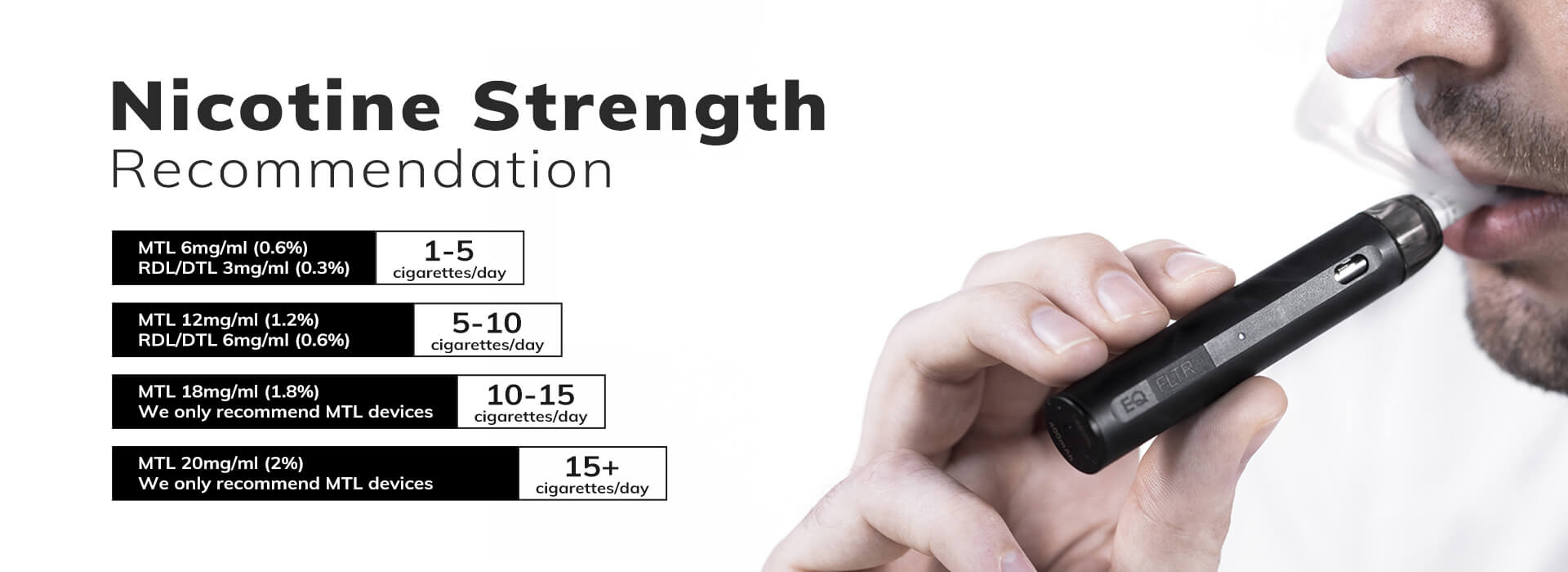
MTL vaping can use nicotine strengths anywhere from 3mg/ml to 50mg/ml (20mg/ml max in Europe). We recommend starting at 12mg/ml and adjusting as required.
DTL coils should use between 0-6mg/ml nicotine and should not be used with higher nicotine levels.
Vapers often choose to decrease the amount of nicotine in their e-liquid over time and may find it easier to stop vaping than it was to stop smoking. You can find a more in-depth guide to choosing the right nicotine strength here.
2. PG – Propylene Glycol
The next component of e-liquid is Propylene Glycol (PG). PG has a wide range of applications in food and medical products. Propylene glycol is also used in various edible items such as coffee-based drinks, liquid sweeteners, ice cream, whipped dairy products and soda. PG has low viscosity, so it’s ideal for e-liquids designed to be used in vaping devices with small wicking ports. PG can create a stronger throat sensation when used as a large proportion of an e-liquid blend and some people are sensitive to it. If you are sensitive to PG, try using e-liquids with low PG content.

3. VG – Vegetable Glycerine
The third component of e-liquid is Vegetable Glycerine (VG). VG is derived from a range of vegetables and has a wide range of applications in food products. VG has a syrup-like viscosity and produces large amounts of vapour when heated. In addition to this, VG imparts almost no throat hit. E-liquid blends containing 70% or more VG are normally labelled “high VG” and should only be used in devices that have an appropriate wicking design.
4. Flavour
The final component of e-liquid is flavour. Some e-liquids may use a single flavouring, while others use a blend of flavours to create a unique flavour profile. All flavourings used in e-liquids are food grade and there are thousands on the market. This means there is practically an infinite number of flavour combinations possible.




